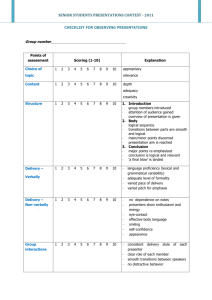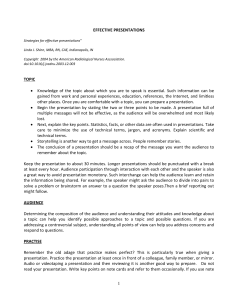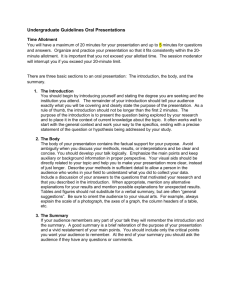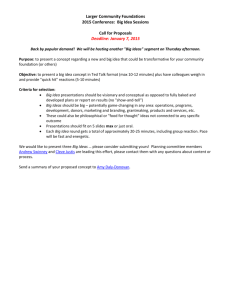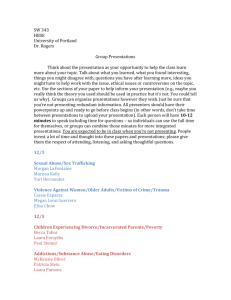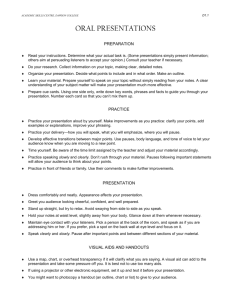National University of Singapore
advertisement
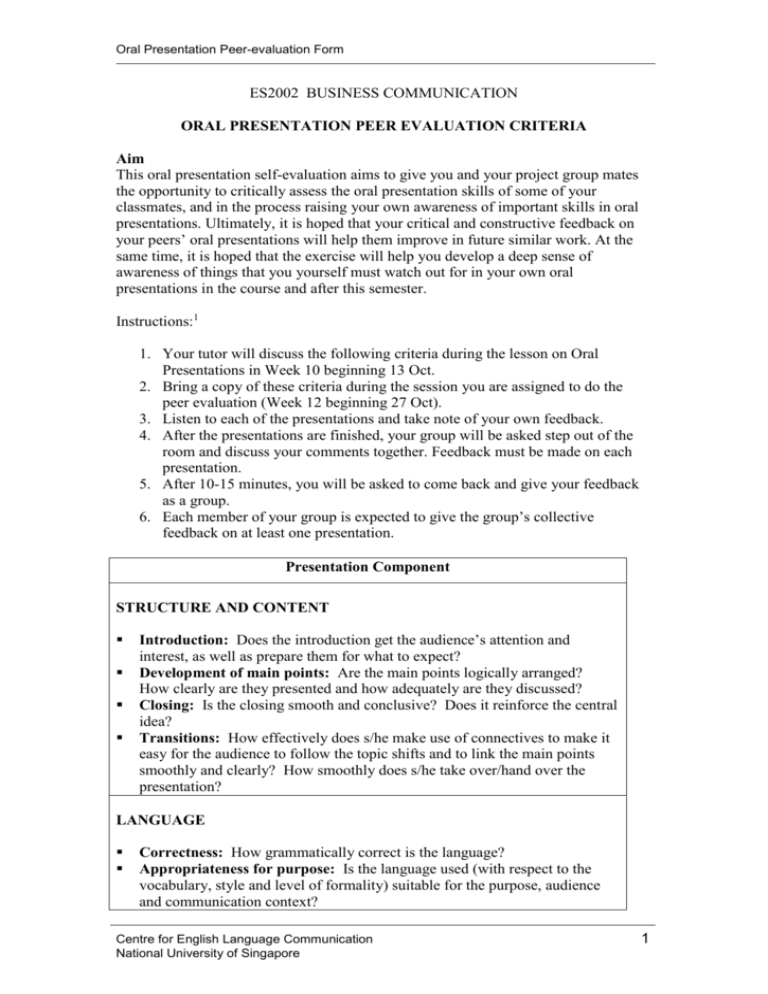
Oral Presentation Peer-evaluation Form ES2002 BUSINESS COMMUNICATION ORAL PRESENTATION PEER EVALUATION CRITERIA Aim This oral presentation self-evaluation aims to give you and your project group mates the opportunity to critically assess the oral presentation skills of some of your classmates, and in the process raising your own awareness of important skills in oral presentations. Ultimately, it is hoped that your critical and constructive feedback on your peers’ oral presentations will help them improve in future similar work. At the same time, it is hoped that the exercise will help you develop a deep sense of awareness of things that you yourself must watch out for in your own oral presentations in the course and after this semester. Instructions:1 1. Your tutor will discuss the following criteria during the lesson on Oral Presentations in Week 10 beginning 13 Oct. 2. Bring a copy of these criteria during the session you are assigned to do the peer evaluation (Week 12 beginning 27 Oct). 3. Listen to each of the presentations and take note of your own feedback. 4. After the presentations are finished, your group will be asked step out of the room and discuss your comments together. Feedback must be made on each presentation. 5. After 10-15 minutes, you will be asked to come back and give your feedback as a group. 6. Each member of your group is expected to give the group’s collective feedback on at least one presentation. Presentation Component STRUCTURE AND CONTENT Introduction: Does the introduction get the audience’s attention and interest, as well as prepare them for what to expect? Development of main points: Are the main points logically arranged? How clearly are they presented and how adequately are they discussed? Closing: Is the closing smooth and conclusive? Does it reinforce the central idea? Transitions: How effectively does s/he make use of connectives to make it easy for the audience to follow the topic shifts and to link the main points smoothly and clearly? How smoothly does s/he take over/hand over the presentation? LANGUAGE Correctness: How grammatically correct is the language? Appropriateness for purpose: Is the language used (with respect to the vocabulary, style and level of formality) suitable for the purpose, audience and communication context? Centre for English Language Communication National University of Singapore 1 Oral Presentation Peer-evaluation Form AUDIENCE AWARENESS Eye-contact: Does s/he have good eye contact with the audience? Is it sustained and widely directed? Use of notes: Does s/he make use of notes? If so, how well does s/he speak from them, without actually reading from them? If not, does s/he come across as seeming to have memorized the presentation? Attention-holding strategies: How well is s/he able to maintain the audience’s attention and interest? Posture: Does the posture project poise and confidence? Does it convey alertness and vigour? Gestures: Are the gestures controlled and purposeful? Does s/he have any distracting gestures? VOICE Pace of speaking: Does the pace of speaking make it easy for the audience to follow him/her, i.e. not too fast or too slow? Pronunciation: How correct and clear is the pronunciation? Intonation: Is the intonation smooth and natural? Does s/he speak in a pleasant and well-modulated voice with an energetic tone (not monotonous)? Projection: Is the voice projection loud enough for the audience to easily hear what s/he is saying? Fluency: Is the presentation fluent (no long pauses, few hesitations/reformulations of ideas, no fillers, e.g. um, er, ok)? VISUAL AIDS 1 Appearance: How simple, clear and attractive are the visual aids? Appropriateness for purpose: Do the visual aids contribute positively to the presentation? Presentation: How smoothly does s/he handle the presentation of the visual aids? How smoothly are they integrated into the talk? Please note that tutors will use the same criteria when they evaluate their students’ oral presentations. Centre for English Language Communication National University of Singapore 2

